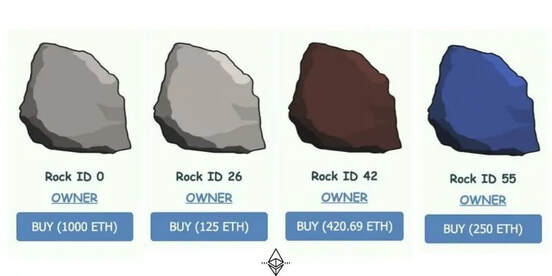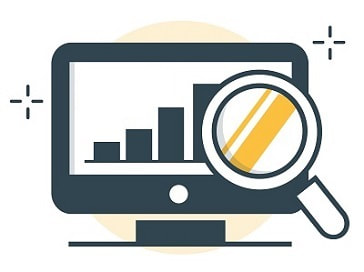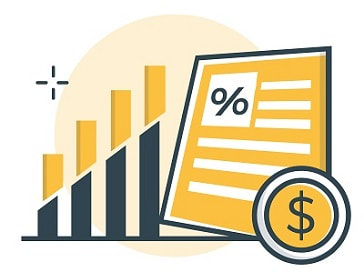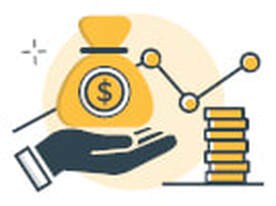NFTs -The Definitive New Zealand Guide
What are NFTs? It’s not an easy question to answer. We’ve written this NFT guide to explain what they are, how they work and whether it’s possible to make money buying and selling NFTs.
Updated 18 July 2024
Summary
Know this first:
Summary:
In this guide, we outline:
- NFTs or non-fungible tokens are the latest addition to the world of decentralised finance. An NFT represents a unique or rare item. They evolved from an earlier concept called CryptoArt.
- Typically, NFTs represent a digital product, such as artwork, animations, avatars, videos or music; they can also represent a physical counterpart, such as a collectable stamp, coin or car.
- NFTs are registered on a public blockchain, such as the Ethereum Network, to prove ownership and verify authenticity. Smart Contracts are used to store metadata, which describes the characteristics of the asset.
- NFTs are traded online in peer-to-peer transactions, typically using cryptocurrencies. Creators sell their NFTs on various platforms or their own websites. Buyers can sell their ownership rights in secondary marketplaces.
- It can be hard to understand NFTs without understanding the underlying use cases and culture. This guide explores everything you need to know about NFTs.
Know this first:
- If you’re planning on investing in NFTs, be aware that NFTs have no intrinsic value besides what the market determines. Just because you bought an NFT for $1,000 doesn’t mean someone else will.
- Despite the many headlines of multi-million dollar NFT sales, only a handful of collections gain value. There are thousands of other NFTs trading for less than a dollar or two.
- Not all cryptocurrency wallets support NFTs, and not all NFT wallets support every standard. Make sure you transfer your NFTs to a compatible wallet.
- It’s fine if you’re curious and want to explore new concepts and technology. But, do not invest in things you do not understand. There is no certainty that any NFT you purchase is likely to appreciate.
Summary:
- NFTs have recently gained a lot of attention following Meta’s (formerly Facebook) recent metaverse push, which encompasses NFTs in its vision.
- The NFT ecosystem has undergone rapid development, and there are already several blockchains supporting NFTs, publishing platforms, marketplaces and compatible wallets.
- More than US$15 billion worth of NFTs have been sold in 2021 so far, but the market declined significantly in 2022.
- The most expensive NFT sold to date is the “Everydays: the First 5000 Days”. The NFT was sold for US$69.3 million in 2021; this was one of the most expensive artwork sales of a living artist in history.
- NFTs are digital items that exist on blockchains like Ethereum and Solana and are defined in smart contracts accessed via compatible crypto wallets.
In this guide, we outline:
Introduction to NFTs
NFTs are a type of digital asset that can only have one owner at a time. Each NFT is registered on a blockchain and has a unique registry number and metadata describing the NFT. The blockchain keeps records of the creator, creation date and ownership history of an NFT. Blockchains make it easy to transfer NFTs to others.
The first NFT was created in 2015 using the Ethereum blockchain. Since then, the interest in NFTs has grown considerably, creating another important use case for blockchains. People begin owning collectable art pieces and buy the rights to art, media and digital objects, holding on to them until their value appreciates - which normally happens when people begin using them in new online environments.
NFT are a digital asset and follow common principles of decentralised finance. For example, the characteristics of an NFT are written in a smart contract, then minted on a blockchain. NFT owners need a digital asset wallet that supports NFTs. Many cryptocurrency wallets and exchanges have begun supporting NFTs already. For example, Coinbase wallet supports NFTs and Binance exchange launched an NFT marketplace.
NFTs are non-fungible tokens. Fungibility is when you can exchange a unit with another unit that holds the same value. For example, a $5 note can be exchanged for another $5 note, or even 5x $1 coins; the same goes for cryptos, as you can exchange one Bitcoin with another one.
In contrast, something that is non-fungible is something that cannot be exchanged for something else, like-for-like. For example, only one painting of the Mona Lisa exists. Therefore, it cannot be changed for another Mona Lisa, nor can it be exchanged with another similar painting. Rather, it can be sold at a value determined by demand.
Besides digital art, NFTs are growing in value in gaming communities, particularly games with virtual worlds and the metaverse trend. NFTs can represent in-game assets. For example, the blockchain game CryptoKitties, where people could own digital cats, breed them and trade them when they rise in value. Each virtual cat holds a unique number and specific attributes that cannot be copied or duplicated.
The first NFT was created in 2015 using the Ethereum blockchain. Since then, the interest in NFTs has grown considerably, creating another important use case for blockchains. People begin owning collectable art pieces and buy the rights to art, media and digital objects, holding on to them until their value appreciates - which normally happens when people begin using them in new online environments.
NFT are a digital asset and follow common principles of decentralised finance. For example, the characteristics of an NFT are written in a smart contract, then minted on a blockchain. NFT owners need a digital asset wallet that supports NFTs. Many cryptocurrency wallets and exchanges have begun supporting NFTs already. For example, Coinbase wallet supports NFTs and Binance exchange launched an NFT marketplace.
NFTs are non-fungible tokens. Fungibility is when you can exchange a unit with another unit that holds the same value. For example, a $5 note can be exchanged for another $5 note, or even 5x $1 coins; the same goes for cryptos, as you can exchange one Bitcoin with another one.
In contrast, something that is non-fungible is something that cannot be exchanged for something else, like-for-like. For example, only one painting of the Mona Lisa exists. Therefore, it cannot be changed for another Mona Lisa, nor can it be exchanged with another similar painting. Rather, it can be sold at a value determined by demand.
Besides digital art, NFTs are growing in value in gaming communities, particularly games with virtual worlds and the metaverse trend. NFTs can represent in-game assets. For example, the blockchain game CryptoKitties, where people could own digital cats, breed them and trade them when they rise in value. Each virtual cat holds a unique number and specific attributes that cannot be copied or duplicated.
How is the value of an NFT determined?
First of all, an NFT is a general term, kind of like a car or house. An NFT can represent any artwork, digital property, tokens, or collectable item that can be traded online, so each NFT is priced separately based on the characteristics and demand for the item.
When thinking about NFTs, especially their value, it’s usually easier to think about it from the perspective of artwork and collectables. However, NFTs have other use cases which are described in this guide.
As NFTs are typically sold on digital marketplaces and auction sites where the price of one item is determined by market activity and demand and supply factors, so when there are more interested buyers, the price increases, and vice versa.
In the cases of artwork, NFT owners do not necessarily own the copyrights to any works; they just own the ownership rights. Just like how you can buy an umbrella with the Mona Lisa on it from the Louvre gift shop, others can copy & paste, download or print digital artwork, even if it’s an NFT.
For example, the image below is for sale on the OpenSea marketplace for 0.03 ETH (NZ$175). A Mona Lisa umbrella is not worth anything close to the original artefact; nor is the below image a claim to owning the original, and nothing prohibits the creator from creating more. Michelangelo is prevented from creating more Mona Lisa’s because of his passing more than 500 years ago.
When thinking about NFTs, especially their value, it’s usually easier to think about it from the perspective of artwork and collectables. However, NFTs have other use cases which are described in this guide.
As NFTs are typically sold on digital marketplaces and auction sites where the price of one item is determined by market activity and demand and supply factors, so when there are more interested buyers, the price increases, and vice versa.
In the cases of artwork, NFT owners do not necessarily own the copyrights to any works; they just own the ownership rights. Just like how you can buy an umbrella with the Mona Lisa on it from the Louvre gift shop, others can copy & paste, download or print digital artwork, even if it’s an NFT.
For example, the image below is for sale on the OpenSea marketplace for 0.03 ETH (NZ$175). A Mona Lisa umbrella is not worth anything close to the original artefact; nor is the below image a claim to owning the original, and nothing prohibits the creator from creating more. Michelangelo is prevented from creating more Mona Lisa’s because of his passing more than 500 years ago.

BIG BUBBLE NFT artwork created by STELO.
Like any other collectable item, the value of an NFT is based on three main aspects, scarcity, utility, and emotional value. These three aspects are almost the same in the case of real-life auctions where expensive pieces of art and paintings are being sold, and the demand of the buyers drives the price of one piece of art.
Scarcity
One of the main aspects that determine the value of owning an NFT is how rare it is. The rarer and the harder it is to find that specific NFT, the more expensive it gets. Even if other or similar copies are created, that does make an NFT worthless. Some creators may mint just one copy of their artworks, while others may create a dozen of one or a collection of similar ones.
For example, “Everydays: the First 5000 Days” by Beeple, is a one-of-a-kind collage of 5000 individual artworks created by the same artist, which was sold for almost $70 million.
For example, “Everydays: the First 5000 Days” by Beeple, is a one-of-a-kind collage of 5000 individual artworks created by the same artist, which was sold for almost $70 million.
Currently, the artwork is the most expensive NFT ever sold and one of the most expensive pieces of work sold by a living artist. The buyer was Vignesh Sundaresan, a Singapore-based programmer and cryptocurrency investor.
Utility
Some NFTs have usable functions and are relatable to our daily lives, for example, when playing video games. There are rare gaming character skins or spells used within the game, making them valuable to some players. Some NFTs have become a requirement for entering videogames or online communities and environments.
For example, games and virtual worlds like Decentraland and Sandbox have issued and are offering their NFTs LAND and SAND, which represent virtual real estate in their virtual worlds. The level of utility can be evaluated when determining the value.
For example, games and virtual worlds like Decentraland and Sandbox have issued and are offering their NFTs LAND and SAND, which represent virtual real estate in their virtual worlds. The level of utility can be evaluated when determining the value.
Emotional value
The meaning behind any artwork is probably the main driver for its value, and therefore the price. The same is true for NFTs too. An NFT with meaning is more likely to be associated with a long-lasting non-materialistic value.
Many crypto enthusiasts are drawn to early CryptoArt because of their interest in the underlying technology and decentralised principles and belief these assets will go down in history as valuables. For example, EtherRocks, an early crypto project from 2017, are pet rocks on the blockchain. They serve no purpose and are simply images of rocks. Justin Sun, the founder of the TRON blockchain, reportedly bought an EtherRock for $500,000.
Many crypto enthusiasts are drawn to early CryptoArt because of their interest in the underlying technology and decentralised principles and belief these assets will go down in history as valuables. For example, EtherRocks, an early crypto project from 2017, are pet rocks on the blockchain. They serve no purpose and are simply images of rocks. Justin Sun, the founder of the TRON blockchain, reportedly bought an EtherRock for $500,000.

EtherRocks that were for sale on etherrock.com
What can NFTs be used for?
There are currently several uses for NFTs; while some are interesting, others are truly game-changing innovations.
1. Collectors
Many of us can relate to the desire to collect rare or valuable items, either as a child or later in life, whether stamps, coins & notes, records, Corgi cars, comic books or baseball, Pokemon or other trading cards.
Although all of the above are tangible items with which you can have a physical attachment, more things are becoming digitised, even collectables. Consider that most of us stopped buying movies on DVD and music on CD a long time ago. The need and desire for having physical objects is dying.
Topps, the leading producer of American football, baseball, basketball, ice hockey and other themed trading cards, launched ToppsNFTs.com and published its first NFT range in April 2021 for collectors to buy previously sold-out Major League Baseball cards.
Given the scarcity nature of some NFTs, collectors see the increasing value of owning an NFT and holding it for an extended period and owning a collection of NFTs that one day can become a rare item sold for a considerable amount of money.
Although all of the above are tangible items with which you can have a physical attachment, more things are becoming digitised, even collectables. Consider that most of us stopped buying movies on DVD and music on CD a long time ago. The need and desire for having physical objects is dying.
Topps, the leading producer of American football, baseball, basketball, ice hockey and other themed trading cards, launched ToppsNFTs.com and published its first NFT range in April 2021 for collectors to buy previously sold-out Major League Baseball cards.
Given the scarcity nature of some NFTs, collectors see the increasing value of owning an NFT and holding it for an extended period and owning a collection of NFTs that one day can become a rare item sold for a considerable amount of money.
2. Gaming
The idea of collectables and tokens emerged in gaming a long time ago, yet in a much simpler form and rarely sold for millions of dollars. Decades ago, gamers used to buy and sell Nintendo 64 cartridges and Playstation One memory cards with saved game data.
Gamers collect tokens, points, or coins as they play to exchange them for loot, skins, special spells, vehicles, and weapons used throughout the game. This has evolved into a real marketplace where players can buy items from the game developers using real money to purchase in-game items. Players can also exchange or sell them to other players for a decided price.
NFTs are the latest evolution of in-game collectables; they’re appealing because owners technically own the item outside of the game, and NFTs have implied scarcity, which isn’t certain in video games.
Large video game developers, like Electronic Arts and Ubisoft, have gone on the record to say that NFTs and blockchain play-to-earn cryptocurrency games are the future of the gaming industry.
Popular blockchain-based games such as Dinosaur Eggs, Axie Infinity, and CryptoKitties are excellent examples of utilising NFTs in video games.
Gamers collect tokens, points, or coins as they play to exchange them for loot, skins, special spells, vehicles, and weapons used throughout the game. This has evolved into a real marketplace where players can buy items from the game developers using real money to purchase in-game items. Players can also exchange or sell them to other players for a decided price.
NFTs are the latest evolution of in-game collectables; they’re appealing because owners technically own the item outside of the game, and NFTs have implied scarcity, which isn’t certain in video games.
Large video game developers, like Electronic Arts and Ubisoft, have gone on the record to say that NFTs and blockchain play-to-earn cryptocurrency games are the future of the gaming industry.
Popular blockchain-based games such as Dinosaur Eggs, Axie Infinity, and CryptoKitties are excellent examples of utilising NFTs in video games.
3. Fanbases
Over the last few years, celebrities and content creators, such as YouTubers, Instagrammers and bloggers, have found new ways to add digital content to their portfolio on various social media platforms, attracting many followers from all ages and categories.
Whether it is a video, a skit, a prank, or just a daily vlog channel, content creators are developing their tools to grow their fan base. Creating a rare NFT is probably a good way for celebrities and influencers to monetise their social media presence and grow the interest in their personal brand.
Jack Dorsey sold his first-ever tweet; Tony Hawk sold his last-ever ollie, Snoop Dogg sold a collection of limited edition digital memorabilia, as have a series of other celebrities.
Whether it is a video, a skit, a prank, or just a daily vlog channel, content creators are developing their tools to grow their fan base. Creating a rare NFT is probably a good way for celebrities and influencers to monetise their social media presence and grow the interest in their personal brand.
Jack Dorsey sold his first-ever tweet; Tony Hawk sold his last-ever ollie, Snoop Dogg sold a collection of limited edition digital memorabilia, as have a series of other celebrities.
4. Investment
A growing number of crypto traders and investors consider NFTs as a great investment due to their rising popularity and value. More people are motivated to join the herd to purchase NFTs as their prices are surging, at least for some collections.
According to Reuters, in the first half of 2021, NFT sales volumes were US$2.5 billion; in the third quarter alone, NFT sales reached US$10.7 billion. In contrast, US$31.1 million of NFTs were sold in 2020 and just US$3.3 million in 2019, according to data from CryptoSlam.
It’s unclear how long this trend will last and whether it is sustainable or just a bubble ready to burst. Still, we know that the NFTs market is growing at astronomical rates, and it has the attention of large organisations like Meta, Microsoft, the World Economic Forum and others.
According to Reuters, in the first half of 2021, NFT sales volumes were US$2.5 billion; in the third quarter alone, NFT sales reached US$10.7 billion. In contrast, US$31.1 million of NFTs were sold in 2020 and just US$3.3 million in 2019, according to data from CryptoSlam.
It’s unclear how long this trend will last and whether it is sustainable or just a bubble ready to burst. Still, we know that the NFTs market is growing at astronomical rates, and it has the attention of large organisations like Meta, Microsoft, the World Economic Forum and others.
5. Collateral
Some crypto visionaries have suggested that NFTs can be used to indicate a borrower’s creditworthiness and used as collateral to secure loans from a decentralised finance company. Because NFTs are secured to a blockchain, unlike a painting nailed to a wall, NFTs can be seen as immovable property. Some NFTs are worth millions of dollars; if the borrower fails to pay back the loans, the loan issuer can take over that NFT to cover the debt.
Several companies are already offering loans secured against NFTs for owners to utilise capital locked up in their illiquid NFTs. One example is a blockchain-based crowdfunding platform called NFTfi, which is a decentralised application (DApp). The company issued its first NFT-backed loan in May 2020 and has since funded over 2,100 loans, totalling over US$26.5 million.
The NFTfi platform recently issued the largest NFT-collateralised loan so far, worth US$1.4 million.
Several companies are already offering loans secured against NFTs for owners to utilise capital locked up in their illiquid NFTs. One example is a blockchain-based crowdfunding platform called NFTfi, which is a decentralised application (DApp). The company issued its first NFT-backed loan in May 2020 and has since funded over 2,100 loans, totalling over US$26.5 million.
The NFTfi platform recently issued the largest NFT-collateralised loan so far, worth US$1.4 million.
Where are NFTs stored?
Since NFTs are decentralised digital files powered by blockchain technology, they are stored similarly to cryptocurrencies.
The blockchain stores all the information about the NFT. Such as the person who created it, and in case it is sold, the new owner is recorded in the transaction chain. The blockchain registers the successors of the NFT if it’s sold again and keeps records of all previous owners to authenticate the ownership chain back to the creator.
Unlike cryptocurrencies, which are denominated in fungible units, NFTs are non-fungible. Therefore, the characteristics of the NFT need to be described in some way. Smart contracts are used to describe NFT characteristics. NFTs that are images, graphics, audio, or video are uploaded to a decentralised file sharing platform called IPFS (InterPlanetary File System) designed to preserve the integrity of files uploaded.
The NFT can be stored in multiple formats: gif, jpg, png, svg, wav, ogg, glb, glt, webm, mp3 and mp4.
Although the Ethereum network is the most prominent blockchain in the NFT space, primarily because of its early capabilities, other blockchains have emerged to support the NFT ecosystem, such as Solana, WAX and Ronin.
The blockchain stores all the information about the NFT. Such as the person who created it, and in case it is sold, the new owner is recorded in the transaction chain. The blockchain registers the successors of the NFT if it’s sold again and keeps records of all previous owners to authenticate the ownership chain back to the creator.
Unlike cryptocurrencies, which are denominated in fungible units, NFTs are non-fungible. Therefore, the characteristics of the NFT need to be described in some way. Smart contracts are used to describe NFT characteristics. NFTs that are images, graphics, audio, or video are uploaded to a decentralised file sharing platform called IPFS (InterPlanetary File System) designed to preserve the integrity of files uploaded.
The NFT can be stored in multiple formats: gif, jpg, png, svg, wav, ogg, glb, glt, webm, mp3 and mp4.
Although the Ethereum network is the most prominent blockchain in the NFT space, primarily because of its early capabilities, other blockchains have emerged to support the NFT ecosystem, such as Solana, WAX and Ronin.
NFT compatible crypto wallets
NFTs are digital assets stored on blockchains, just like Bitcoin, Ethereum and other cryptocurrencies. To access your NFTs, you’ll need to use a compatible crypto wallet that supports the right blockchain and standard.
Most NFTs are created on the Ethereum blockchain, but other popular blockchains supporting NFTs are Solana, WAX, Binance Smart Chain, Polygon, Ronin, TRON, etc.
Most NFTs are created on the Ethereum blockchain, but other popular blockchains supporting NFTs are Solana, WAX, Binance Smart Chain, Polygon, Ronin, TRON, etc.
- Metamask is generally accepted as the best Ethereum-based NFT wallet in the crypto community. Metamask connects with hardware wallets like Ledger and Trezor, allowing you to secure your private keys and keep your tokens secure.
- Coinbase is not just a crypto exchange (currently unavailable in New Zealand); it’s also an easy-to-use crypto wallet that supports hundreds of coins, tokens, and Ethereum NFTs. Coinbase Wallet supports ERC20 Ethereum tokens, but not ERC721, which is the standard most recent NFTs are built using.
- Enjin is a blockchain wallet that supports cryptocurrencies and Ethereum-based NFTs. The wallet has a native token called ENJ, used to buy and sell NFTs in the apps marketplace. Besides being a crypto and NFT wallet, Enjin is a platform for creating (or minting) NFTs
How are NFTs created?
NFTs are created via a process called minting, similar to other tokens created on existing blockchains. Tokens, whether they’re NFTs or another type, are written in smart contracts, which defines the characteristics of the NFT. How they are created depends on the underlying blockchain.
In the Ethereum blockchain, smart contracts are written in a language called Solidity. Most NFTs are created using either ERC-271 or ERC-1155. Smart contracts define everything about the token, such as whether it’s tradable, how many should exist and whether the creator should earn royalties from every resale of the artwork. NFTs also include various metadata, such as the name, description, image, traits and other attributes.
Creating an NFT is somewhat technical and requires some development knowledge, but numerous open-source development kits and libraries are available. However, thanks to several NFT creation platforms that let you create your token in under ten minutes, you don’t need to write any code or interface with the blockchain to launch your NFTs.
NiftyKit is a publishing platform for NFT creators and requires no coding experience whatsoever. With a US$9.99 monthly subscription, creators can mint their tokens on the Polygon network and buy add-ons to publish on the Ethereum network.
However you choose to create your NFT, you’ll need to have an Ethereum wallet and own enough ETH to cover the gas fees paid to Ethereum miners for minting the token. Once your NFT is created, you can list it on any of the NFT marketplaces if you didn’t already create it using one of the marketplaces.
In the Ethereum blockchain, smart contracts are written in a language called Solidity. Most NFTs are created using either ERC-271 or ERC-1155. Smart contracts define everything about the token, such as whether it’s tradable, how many should exist and whether the creator should earn royalties from every resale of the artwork. NFTs also include various metadata, such as the name, description, image, traits and other attributes.
Creating an NFT is somewhat technical and requires some development knowledge, but numerous open-source development kits and libraries are available. However, thanks to several NFT creation platforms that let you create your token in under ten minutes, you don’t need to write any code or interface with the blockchain to launch your NFTs.
NiftyKit is a publishing platform for NFT creators and requires no coding experience whatsoever. With a US$9.99 monthly subscription, creators can mint their tokens on the Polygon network and buy add-ons to publish on the Ethereum network.
However you choose to create your NFT, you’ll need to have an Ethereum wallet and own enough ETH to cover the gas fees paid to Ethereum miners for minting the token. Once your NFT is created, you can list it on any of the NFT marketplaces if you didn’t already create it using one of the marketplaces.
How to trade NFTs?
There are several marketplaces for buying and selling NFTs. One of the most popular NFT marketplaces is OpenSea, which at its peak on the 4th of October 2021, processed over 112,000 transactions worth more than US$138 million for 38,800 active users in a single day, according to DappRadar data.
NFT markets are great for creators, buyers and resellers. Once creators issue their NFT, they can access a larger buying audience on larger platforms, but naturally, they face increased competition.
In the marketplace, buyers bid on various listings similar to an auction. Each bidder essentially appraises each NFT listing with their bid, ultimately determining the price of an NFT. The highest bid becomes the new owner of that NFT, paying the money to the current owner.
The proof of ownership of the NFT is recorded on the underlying blockchain, mentioning the new owner of the NFT, the previous owner(s), and the creator, which helps combat fraud and forgery. The previous owner and new owners actual names are not disclosed; their wallet addresses are published.
Some NFTs might have a royalty term in the smart contract, which entitles the creator to receive a commission from further sales. If the new owner sells the NFT to another collector, the creator receives a percentage of the resale value.
Popular Ethereum NFT marketplaces include OpenSea, Mintable and Rarible. All of these marketplaces provide features to mint, sell and buy NFTs. Unlike crypto exchanges, NFT markets don’t provide wallets, so users need to connect their own wallets.
Besides the dozens of high volume Ethereum NFT marketplaces, others specialise in selling tokens based on other blockchains. For example, SolSea supports Solana-based tokens, and AtomicHub supports WAX.
NFT markets are great for creators, buyers and resellers. Once creators issue their NFT, they can access a larger buying audience on larger platforms, but naturally, they face increased competition.
In the marketplace, buyers bid on various listings similar to an auction. Each bidder essentially appraises each NFT listing with their bid, ultimately determining the price of an NFT. The highest bid becomes the new owner of that NFT, paying the money to the current owner.
The proof of ownership of the NFT is recorded on the underlying blockchain, mentioning the new owner of the NFT, the previous owner(s), and the creator, which helps combat fraud and forgery. The previous owner and new owners actual names are not disclosed; their wallet addresses are published.
Some NFTs might have a royalty term in the smart contract, which entitles the creator to receive a commission from further sales. If the new owner sells the NFT to another collector, the creator receives a percentage of the resale value.
Popular Ethereum NFT marketplaces include OpenSea, Mintable and Rarible. All of these marketplaces provide features to mint, sell and buy NFTs. Unlike crypto exchanges, NFT markets don’t provide wallets, so users need to connect their own wallets.
Besides the dozens of high volume Ethereum NFT marketplaces, others specialise in selling tokens based on other blockchains. For example, SolSea supports Solana-based tokens, and AtomicHub supports WAX.
NFT Frequently Asked Questions
What can be created as an NFT?
You can turn anything into an NFT, and it doesn’t just need to be artwork, although that’s the most common use case. The most successful NFT creators have the imagination to create digital artwork that has become cult-like hits in the crypto community. Artists usually find concepts that are trendy that people can buy as a form of online self-representation.
What can I use NFTs for?
For the overwhelming majority of people, NFTs are a collectable related to one of their interests, but there are a growing number of NFT speculators and investors. Investors seek hyped up NFT projects and buy early, expecting the price to appreciate in the months and years that follow. Some traders buy newly issued NFTs directly from creators as soon as they drop and resell them on the secondary markets; this is known as scalping. Other NFTs might have a utility, such as offering admission to a site or platform.
Where can I sell my NFT?
Creators can sell their tokens on their website if they have the necessary tools and a fanbase. On the other hand, some marketplaces list numerous NFTs from different creators and resellers, and thousands of traders gather to bid on NFTs in an auction-like manner.
What blockchains are used to create NFTs?
There are dozens of blockchains supporting NFTs. While the most popular example is the Ethereum network, other blockchains used for mining tokens are Solana, EOS, TRON, WAX, BSC, Ronin, etc.
Do fake NFTs exist?
While it’s impossible to fake an NFT because every transaction is recorded on a blockchain, it is possible to deceive people into believing something is worth more than it should. For example, copycats can mimic highly successful NFT collections and hope that less experienced NFT buyers will fall for the trap. There have been other cases where famous artists have been impersonated, and inauthentic NFT collections have been released in their name, despite not being affiliated with the token creation.
Do NFT buyers own the copyrights?
When you buy an NFT, you don’t necessarily own the copyright to the underlying artwork or intellectual property. If the copyright is transferred with the token, it needs to be explicitly mentioned in the token’s smart contract. Under copyright law in New Zealand and most jurisdictions, the copyright is given to the creator by default. Unless they explicitly relinquish their copyright, they continue to own the rights.
Related guides (external):
MoneyHub guides:
- Popular NFT collections (CryptoPunks, Bored Ape Yacht Club)
- NFTs in the Metaverse
MoneyHub guides:










